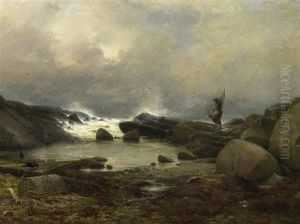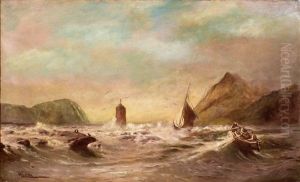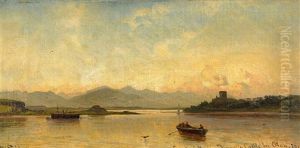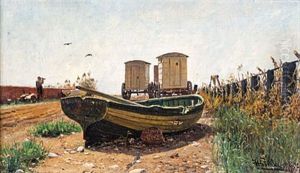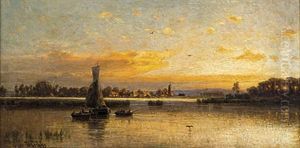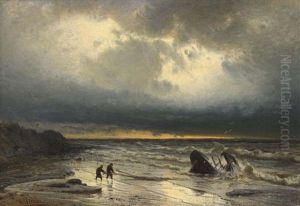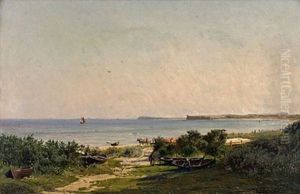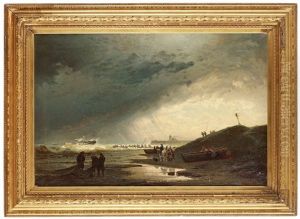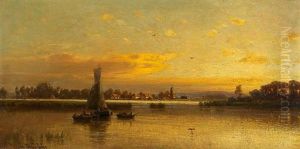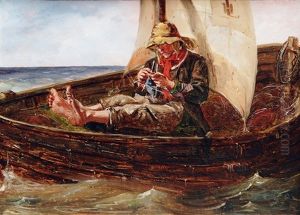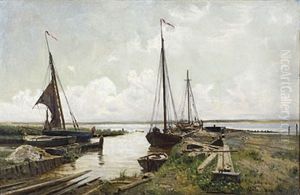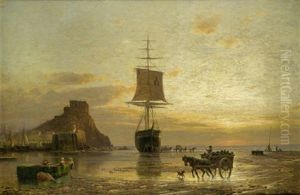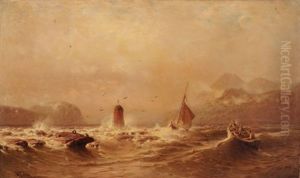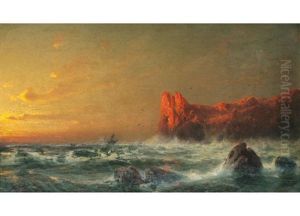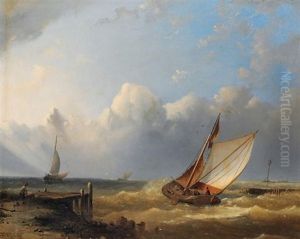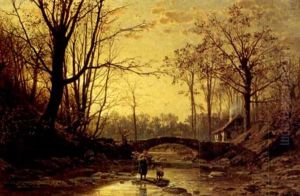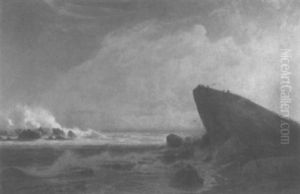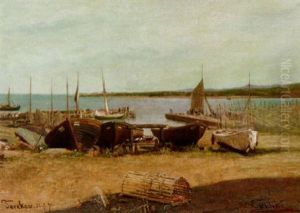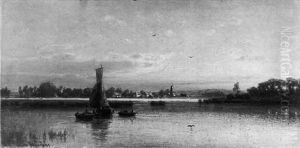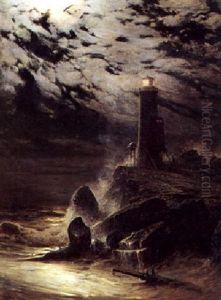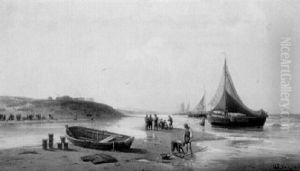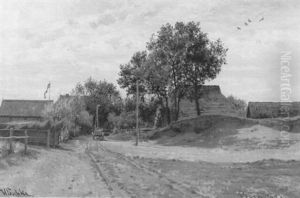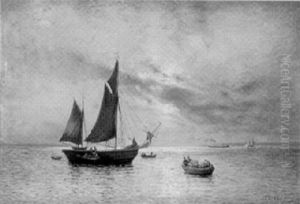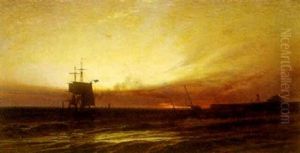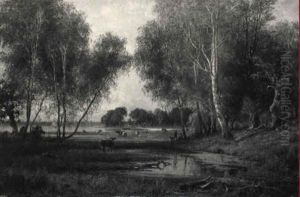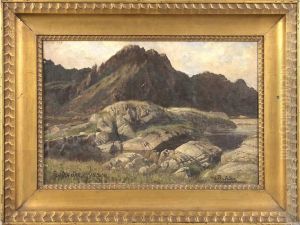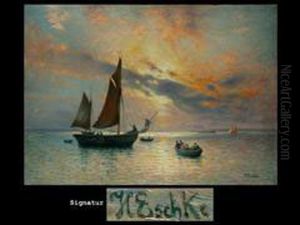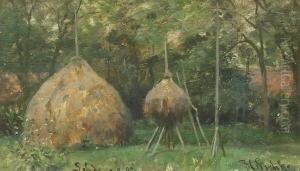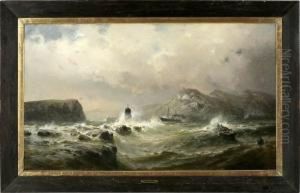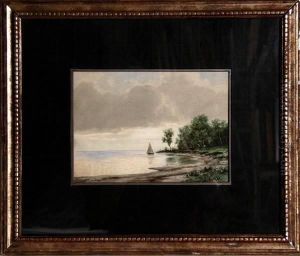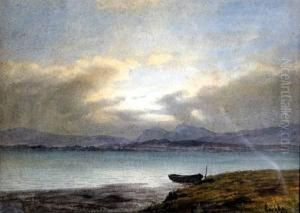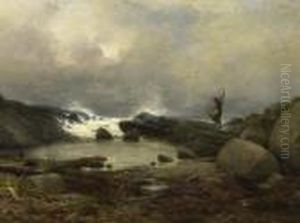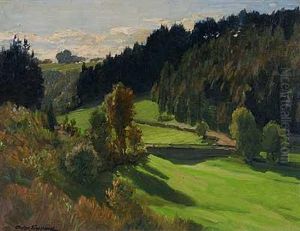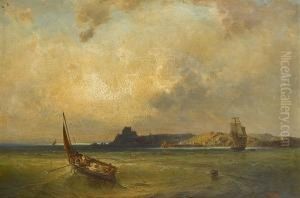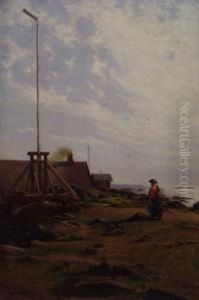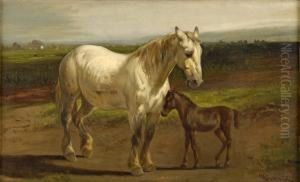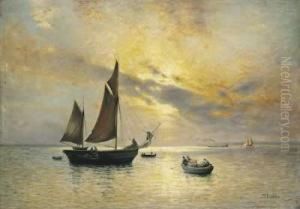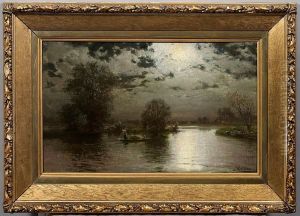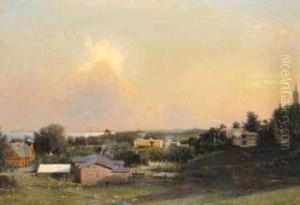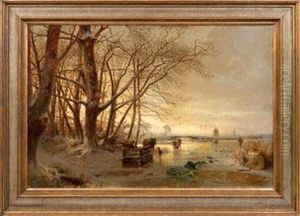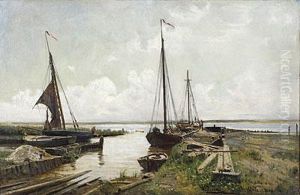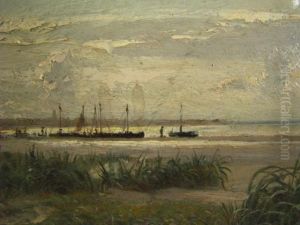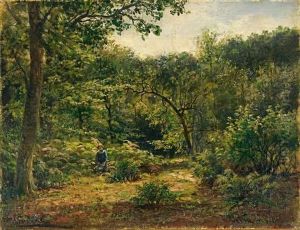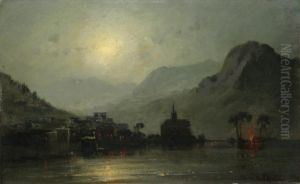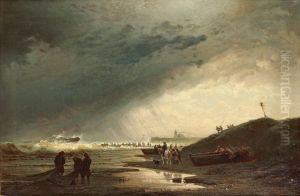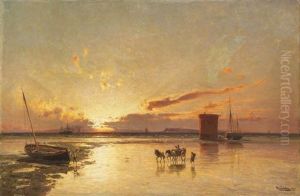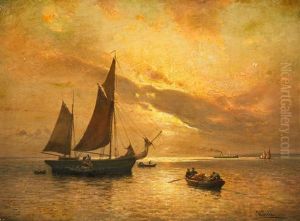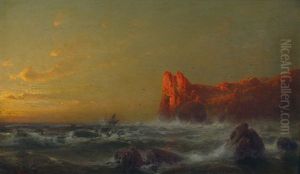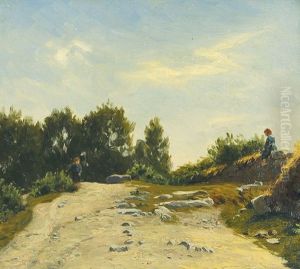Hermann Eschke Paintings
Hermann Eschke was a German landscape painter known for his detailed and atmospheric depictions of maritime and coastal scenes. Born on January 31, 1823, in Berlin, Eschke developed an early interest in art, which was nurtured by his initial training with his father, who was also a painter. Later, he attended the Prussian Academy of Arts in Berlin, where he further honed his skills and began to establish his artistic identity.
Eschke's work was profoundly influenced by the Romantic movement, which was prevalent in Europe during the early 19th century. This movement placed a strong emphasis on the beauty and power of nature, and it is these elements that Eschke captured in his paintings. He was particularly skilled at portraying the interplay of light and atmosphere, often depicting scenes of storms, shipwrecks, and calm seas with a remarkable sense of realism and emotion.
Throughout his career, Hermann Eschke was a respected member of the Berlin art community. He received numerous commissions and his work was exhibited widely, including at the Prussian Academy of Arts and various other prestigious venues. His paintings appealed to a broad audience and were celebrated for their technical excellence and evocative imagery.
Eschke's influence extended beyond his immediate contemporaries as he was also a teacher; he shared his knowledge and passion for art with a new generation of painters. His legacy is preserved in the collections of various museums and galleries, where his work continues to be admired for its contribution to the landscape genre in German art.
Hermann Eschke's life was dedicated to capturing the essence of the natural world and the majesty of the sea. He passed away on December 18, 1900, in Berlin. His work remains a testament to his skill as an artist and his deep appreciation for the romantic and dynamic qualities of nature.
